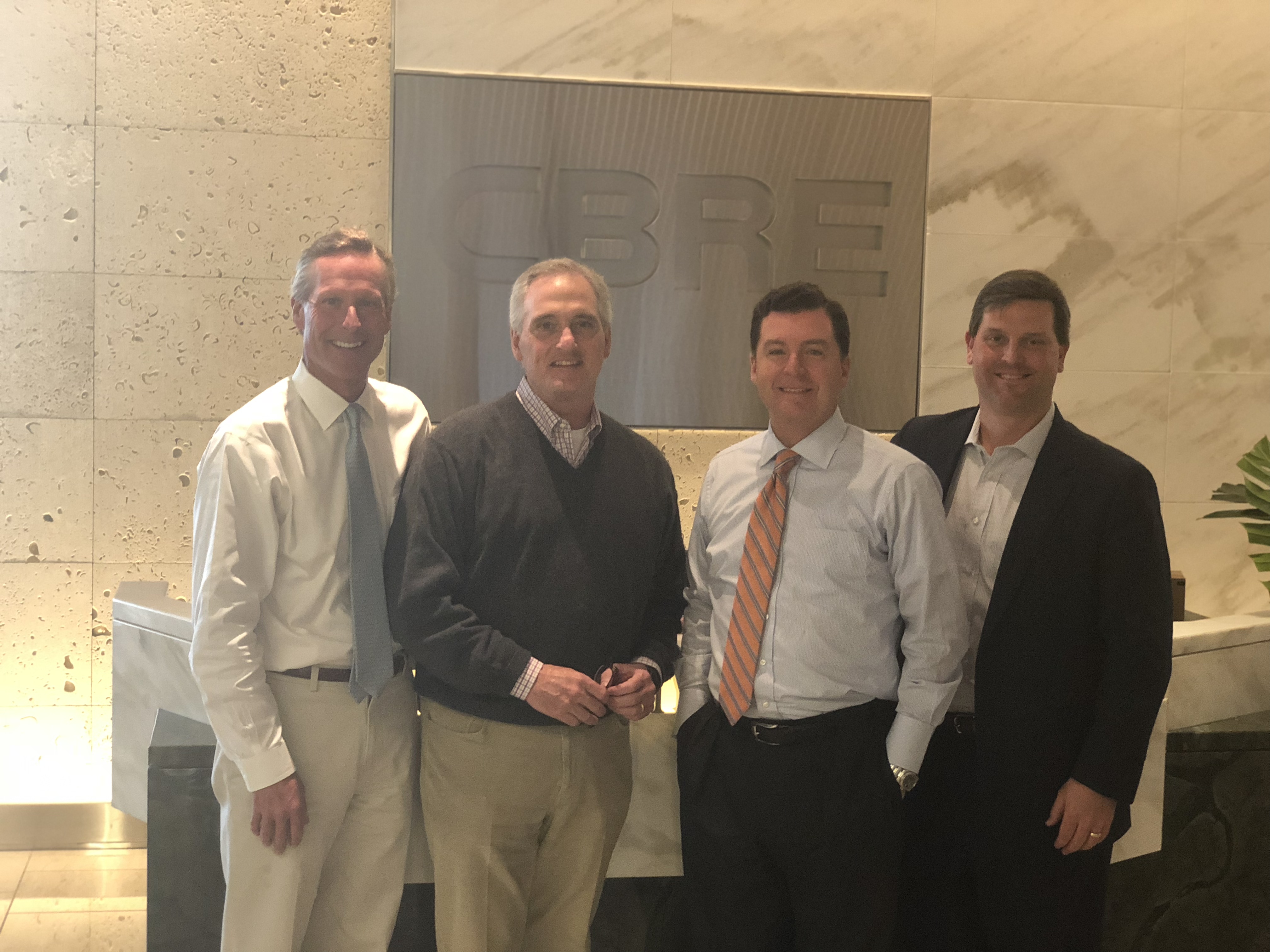Although the global commercial real estate powerhouse has a Los Angeles headquarters address, CBRE has deep, strong roots in Dallas, where much of its brain trust is based. Well into the longest up cycle in recent memory, the firm’s top brass are looking at Dallas’ prospects for ongoing growth.
D CEO recently sat down with Division President Michael Caffey, Senior Managing Director of Occupier Services Blair Oden, Senior Managing Director of Advisory and Transaction/Investor Services Chris Hipps, and Retail Managing Director Daniel Taylor to talk about the biggest challenges and opportunities that lie ahead.
Blair Oden: “Twenty years ago, I can remember, I was working with Mike Lafitte, he was my first boss in the real estate business. He told me back then, ‘This is the best market to be in over the next 20 years, in the entire country. I don’t care what they say about New York, or LA or Atlanta or anything else.
“There’s not another market in the U.S. that has created the number of jobs that we have over a five-year, 10-year, 20-year—pick your time period. We had a hiccup in 2009. I think 2002 might have been the only year that Dallas shrunk in jobs.
“The safety net [for Dallas] is the job growth. … You just have to continue the job growth to continue to support the demand side. The single biggest data point in our business that affects every asset class there is, is job growth. Where there is job growth, there is a vibrant real estate market.”
D CEO: Can you comment on the changing nature of retail and the growth of e-commerce?
Daniel Taylor:“If you look at the total retail sales in the U.S., about 9 percent are online. I get that question a lot: ‘Is e-commerce taking over?’ And just to put that in perspective, a lot of countries like in Asia for example, e-commerce may be as high as 30 percent. So, on the spectrum, we’re still a really low portion. If you look at that 9 percent, half of that’s Amazon. The other half is traditional bricks-and-mortar retailers.
“I think that’s one of the real myths out there, that e-commerce is taking over bricks-and-mortar. Yet Amazon just announced they’re getting ready to open 3,000 stores. Whoever can figure out how to do returns [for online retailers] is going to make a lot of money. Pure online retailers are really good at selling you goods. They’re not very good at taking them back.
“We have not found a pure online retailer that makes money. I think that’s why you’re seeing so many of them push into the bricks-and-mortar. The National Retail Federation says that when someone comes in the store to buy something, they actually spend 7 percent more in the store because of impulse buys.
“Popups have become such a common thing right now, and the reason is you’ve got a lot of retailers who can, for a very small amount of money, go and test the waters. So, we’re seeing a lot of developers take space and white-box it for popups. Consumers like it because it keeps something fresh coming through the project, but it also allows the retailer to test the waters and see how they’re going to do before they dive in with both feet and make a big commitment.”
D CEO: What has you excited about the future?
Chris Hipps: “We send out a survey to our investors every year…and they rank by asset class and by geography where they would place their dollars for the upcoming 12 months. In our most recent survey, Dallas was second among major metropolitan areas.
“We have seen no shortage of capital in Dallas, both debt capital and equity capital. We continue to enjoy a very healthy volume of investment sales across every asset class.
“Another data point that speaks to the health of our city and validates that we are a metropolitan, cosmopolitan city, is that we continue, every month, to get new investors. … We have international capital, we have private equity that’s come in, we have equity that’s sponsoring operators; we continue to see new faces, every month, which is a really, really good thing for our market. It keeps it healthy.”
Michael Caffey: “There is a tremendous amount of global capital that is looking every day to get a place, to get a return. The capital markets are more active in the real estate space than they ever have been. … One the challenges Dallas has had is maintaining the value because there are no barriers to sprawl. But we seem to have stabilized, in the last cycle especially, which supports why more capital is here in this market, because they can retain the value of their assets.”





